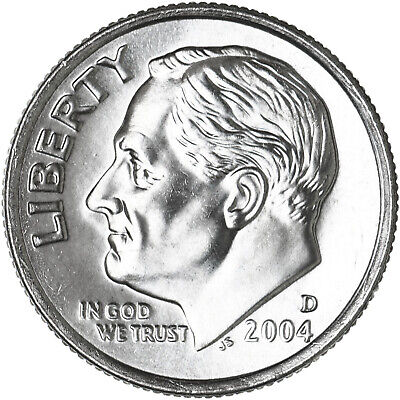Introducing children to numismatics can spark an interest in history, economics, and organization. Collecting Roosevelt dimes is an excellent starting point for young collectors, offering an accessible and affordable entry into the world of coins. With this guide, you can help children begin their coin-collecting journey without breaking the bank.

Why Start with Roosevelt Dimes?
Roosevelt dimes, introduced in 1946, feature the profile of President Franklin D. Roosevelt and serve as a tribute to his efforts in founding the March of Dimes. These coins are widely available in circulation, making them easy and inexpensive to collect. The consistent design over the decades allows collectors to focus on differences in mint marks, years, and conditions rather than variety in appearance.
Key Benefits of Collecting Roosevelt Dimes:
- Accessibility: These coins can often be found in pocket change or acquired at face value.
- Educational Value: They provide a gateway to learning about U.S. history and the role of currency in commerce.
- Affordability: Unlike some numismatic pursuits, collecting Roosevelt dimes requires minimal investment.
Steps to Help Kids Start Collecting
Introduce the History
Begin by explaining the historical significance of Roosevelt dimes. Share the story of President Roosevelt’s leadership and his role in the March of Dimes campaign. Use resources like the U.S. Mint website to provide context and deepen their understanding.
Gather Basic Supplies
Equipping kids with the right tools can make the experience more engaging. Basic supplies include:
- Coin Albums or Folders: These help organize and display their collection.
- Magnifying Glass: Useful for examining mint marks and details on the coins.
- Simple Scale: Ideal for weighing coins to identify potential errors.
These inexpensive and widely available items make them an easy addition to the hobby.
Set Collecting Goals
Encourage children to define their collecting focus. For example:
- By Year and Mint Mark: Collecting one coin from each year and mint (e.g., Philadelphia, Denver, San Francisco) provides a clear and achievable goal.
- By Condition: Targeting circulated or uncirculated coins adds a layer of challenge.
- Special Editions: Including proof coins or error dimes can excite the collection.
Refer to guides like the PCGS Price Guide to set realistic goals and learn more about coin values.
Search Through Change
A simple and cost-effective way to find Roosevelt dimes is by searching through loose change. Encourage kids to check their own pocket change or family coin jars. Visiting local banks to purchase coin rolls can also yield results and add an element of treasure hunting to the hobby.
Learn Coin Grading
Teaching kids the basics of coin grading helps them evaluate the condition of their finds. The NGC Coin Grading Scale provides a straightforward explanation of assessing a coin’s quality. Understanding grading also introduces kids to the concept of value in numismatics.
Key Coin Collecting Terms
Understanding common terms helps kids grasp the basics of numismatics. Here are a few essential definitions:
| Term | Definition |
|---|---|
| Mint Mark | A small letter on a coin indicating where it was minted. |
| Circulated | Coins that have been used in commerce and show signs of wear. |
| Uncirculated | Coins that show no wear and have been preserved in mint condition. |
| Proof | Specially made coins with a mirror-like finish, intended for collectors. |
Maintaining the Collection
Proper care helps ensure coins retain their condition and value. Teach children these simple maintenance practices:
- Store Coins Safely: Use a cool, dry place to prevent tarnishing.
- Handle with Care: Always hold coins by their edges to avoid smudges or fingerprints.
- Use Protective Holders: Coin holders or albums shield coins from scratches and environmental damage.
- Inspect Regularly: Periodically check the collection to ensure its condition remains intact.
Educational Benefits of Collecting Coins
Coin collecting offers numerous opportunities for learning and personal development:
- History: Roosevelt dimes provide a window into mid-20th-century U.S. history.
- Geography: Exploring mint marks introduces kids to the locations of U.S. Mints, such as Philadelphia, Denver, and San Francisco.
- Economics: Understanding the value of coins teaches basic economic principles and the concept of inflation.
- Organization: Sorting and cataloging coins enhances organizational and attention-to-detail skills.
For additional educational activities, the American Numismatic Association’s Kids Zone offers fun and interactive resources tailored to young collectors.
Affordable Ways to Expand the Collection
As kids progress in their collecting journey, there are budget-friendly ways to expand their collection:
- Swap Coins: Encourage children to trade duplicates with friends or other collectors.
- Visit Coin Shows: Local coin shows often have affordable options and provide learning opportunities from experienced collectors.
- Explore Online Resources: Websites like Coin World offer news and insights into the numismatic community.
Conclusion
Collecting Roosevelt dimes offers children a fun, affordable, and educational introduction to numismatics. This hobby allows them to explore history, develop organizational skills, and cultivate a lifelong interest in coins. With a minimal investment and the right guidance, kids can build a meaningful collection that grows alongside their knowledge.
Encourage young collectors to start small, stay curious, and enjoy the journey of discovering the stories behind each coin. By starting with Roosevelt dimes, they can lay the foundation for a rewarding and enriching hobby. For additional resources and tips, visit Coin World and other trusted numismatic platforms.
